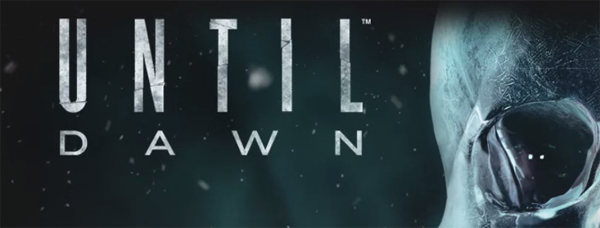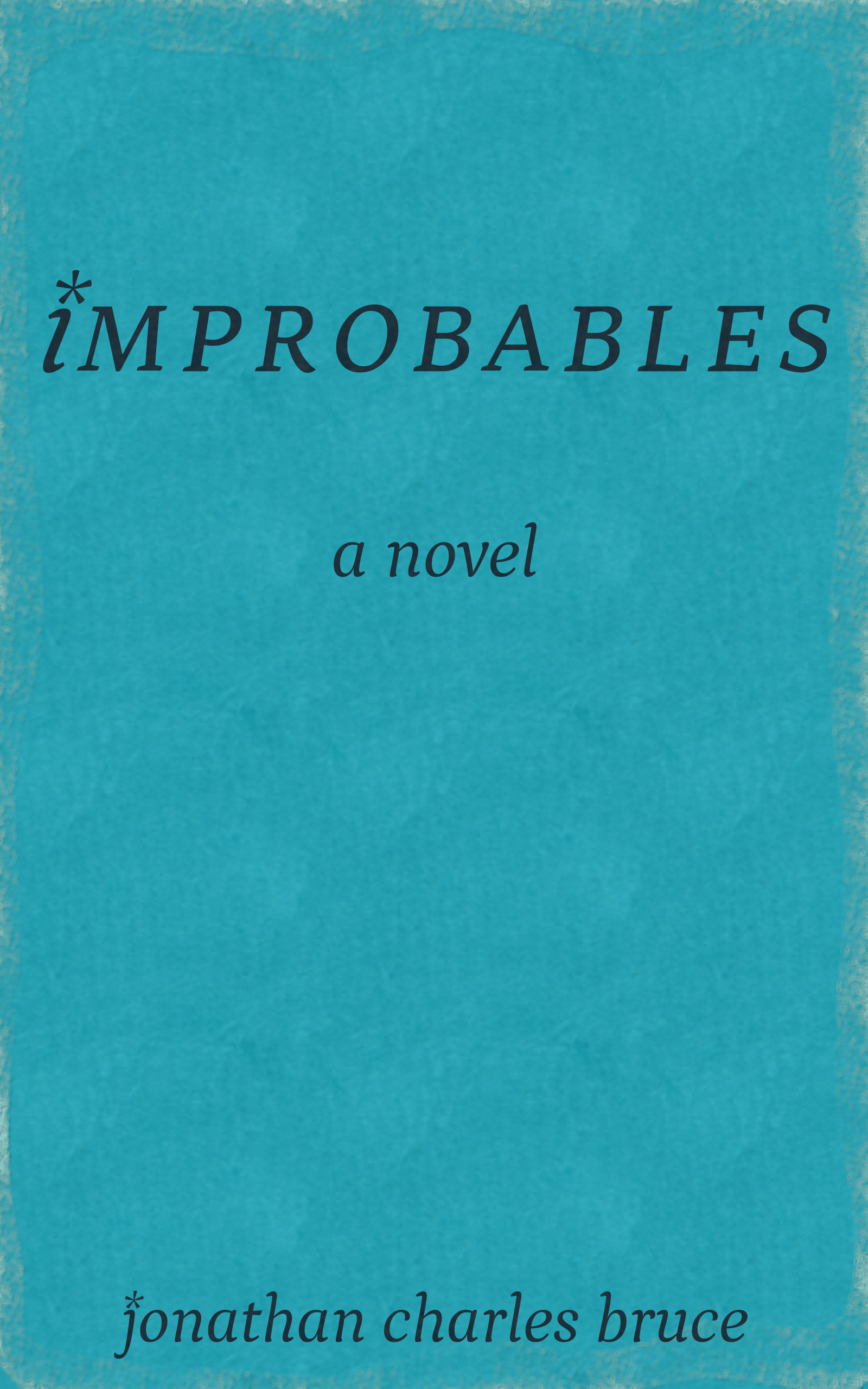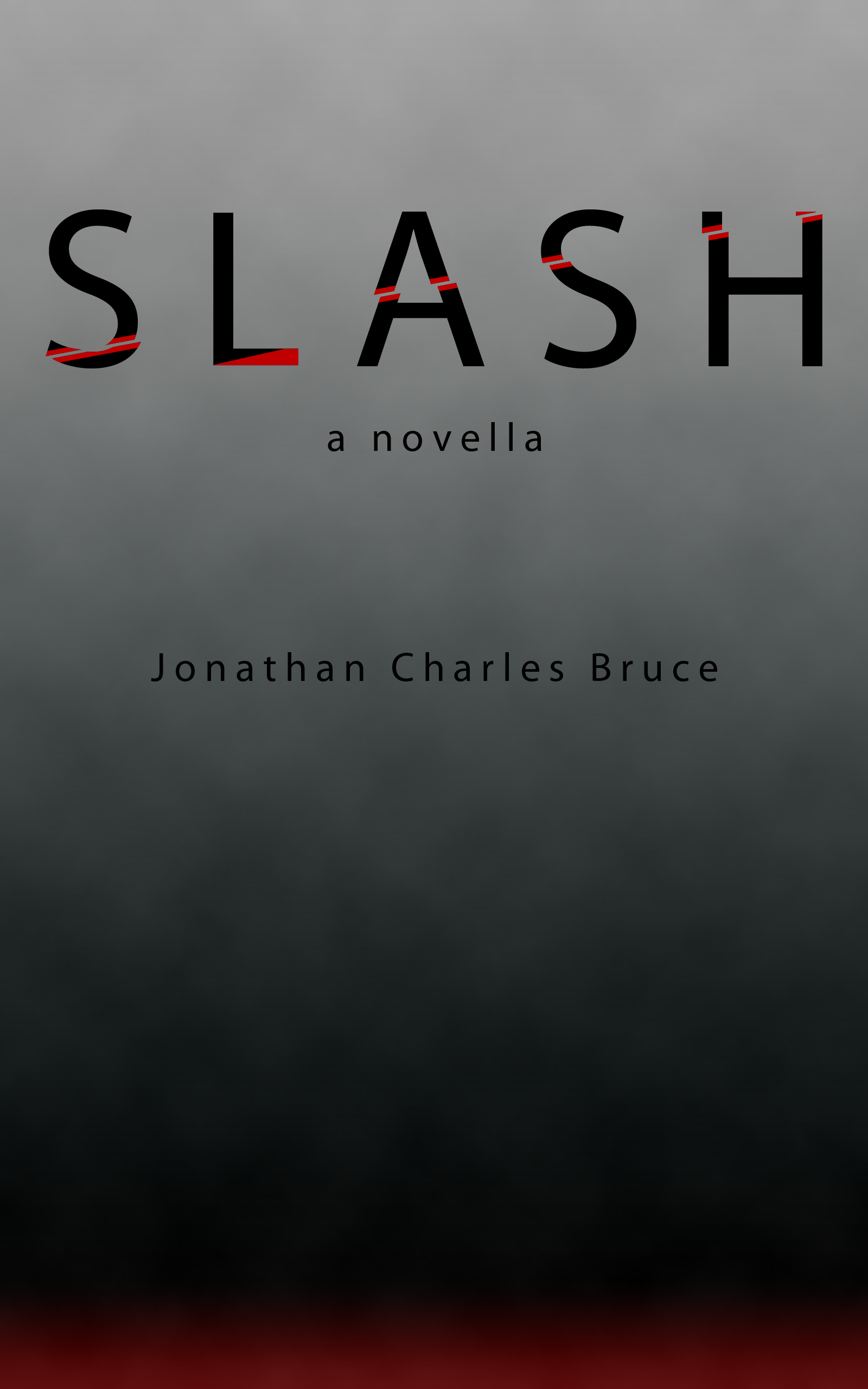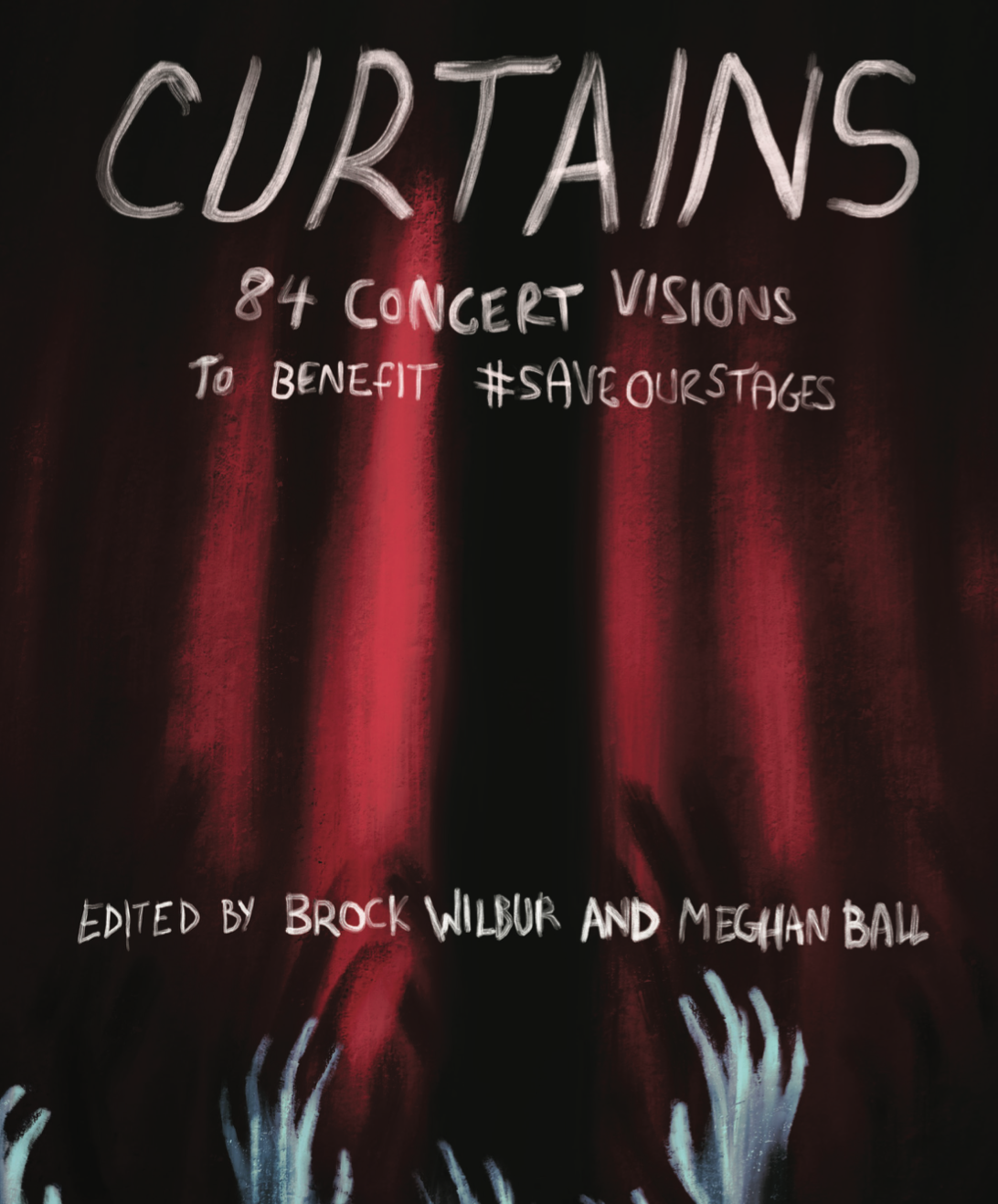
Review and Reflection
Until Dawn logo (and game) from Supermassive Games
First, some mood music:
For those of you who have been following along for years or, indeed, since this summer, you know that I have a thing for horror. The problem that I’m finding, though, is that most horror is just plain bad. So much of what’s produced that wears the genre label is horror based on style and not substance—they proudly spray gore and devote a ghastly amount of time to tearing people apart, but the actual soul is missing. Stock characters torn apart by traps or monsters may as well be mannequins filled with red Jell-O for all the emotional resonance they instill in the audience.
Which brings me to the topic of this review and reflection. Until Dawn is a PS4 exclusive by Supermassive Games. It’s also the best goddamn game of 2015.
The game opens up at a ski lodge in the aftermath of a drunken party of ten teenagers. A prank on one of the girls, Hannah, ends very poorly with her charging out into a snowstorm. Her twin sister, Beth, rushes after her. Needless to say, there’s a stalker of some variety on the mountain, and the two girls disappear. A year later, their brother, Josh, invites the others back to the lodge for… um… remembrance… purposes?
The teenagers, having apparently never seen a horror movie, reconvene at the lodge of bad ideas. The early chapters of the game are dedicated to establishing the newly shuffled relationships between the characters. There’s Ashley, the shy girl with the crush on Chris, the bespectacled dork who is like a much less annoying/assholish version of me in high school. Mike, the charismatic jerk, is now dating Jessica, who hides her self-consciousness behind a façade of bravado. Emily is the caustic-witted straight-A student who recently endured what I’m assuming is a rough breakup with Mike. She rebounds with Matt, an athlete who is a bit on the simple side but means well. Rounding out the ensemble is Sam, Hannah’s best friend from before the whole “mysterious disappearance” thing.
What follows is a decent into a surprising number of different well-trod horror stories, but effectively turns each one on its head. There are elements of Saw, I Know What You Did Last Summer, and any number of other films and subgenres. The truly gripping thing about the experience, though, is how well the writers made each element play off each other for an interesting ebb and flow of styles.
Let’s get the boring, gameplay talk out of the way. The game mechanics themselves are invested quite a bit in exploration (and the inherent tension that such things may entail) and decision making. You can pick up and examine items for potential clues. Nearly every action more complicated than turning a knob is handled by some movement of the right analog stick or a swipe of the PS4’s trackpad. When presented with a binary choice, you choose it by pushing left or right on the right stick.
There are a number of quick time events, requiring button pushing to keep balance, rescue another character, or not bash your face into a branch. On occasion (and frequently in the closing chapters), you will be asked to remain motionless by not moving the controller. There are also the occasional “combat” segments where you move a cursor around on screen to select a target to act upon. Additionally, in some cases, when presented with a choice, you have the option to do nothing. Subverting the typical “moral choice” binary, this option is never really overtly displayed and occasionally is the best possible way to move forward.
What the game may lack in traditional game-y systems like player empowerment and the like, it more than makes up for in its story and presentation. Right away, the game makes really impressive narrative strides with its protagonists. Within the first couple of chapters, you will play each of the main characters (with the exception of Josh) and make a couple of decisions that have far-reaching consequences. This serves as your introduction to the Butterfly Effect system, where your choices will affect dialogue and, indeed, who lives and who dies.
One example of this early on is a scene where Ashley comes across Emily and Mike sharing what looks like a surprisingly tender moment for a couple of exes. When Ashley encounters Matt, she has the option of telling him what she saw. Concealing it will not have any significant impact, but telling Matt will make him voice his grievances with Emily at a really bad opportunity. It’s a clever way to keep people coming back, but it also serves as a way to develop characters.
The game is helped tremendously by the quality of acting and motion capture. Everyone who performed for Until Dawn absolutely nails their delivery and, with the exception of the occasional goofy face, the character models convey an absolutely amazing amount of emotional detail. Close-ups of faces reveal such wonderful depths to each of the actors’ performances, whether it is Ashely breaking down and over-explaining herself or Peter Stormare’s scenery chewing awesomeness, the delivery of lines and little tics of personality are the kind of things that help you relate to the people on screen.
Forcing the player into the shoes of the powerfully expressive protagonists early on and introducing them to game mechanics that have far-reaching consequences means that the player is invested in the characters as individuals. It also succeeds in what many entries in the horror genre fail to do: it engenders empathy with the characters. This juggling between multiple viewpoints, personalities, and scenarios is easily Until Dawn’s greatest strength as a game and as a narrative.
The biggest example of this success is, surprisingly enough, with Emily. She does her best to make herself the prototypical Queen Bee character. She’s cruelly mean to just about everyone, including her new boyfriend. She attempts to slut-shame Jessica and is routinely condescending. When we’re in control of her, though, we experience the vulnerability that makes her human. She talks to herself to keep calm, capably creates a torch (I say “capably” because when I was 18, I certainly would have had no clue how to do that), reacts to discoveries that display her humanity, and ultimately has the best action sequence in the game.
This is a brilliant subversion of typical horror movie tropes. What I mean by this is a character like Emily is coded to be deserving of a horrific, onscreen death. After all, she’s mean, self-centered, and is a woman who is authoritative in a non-approved way (that is to say, she’s a leader before a crisis thrusts her into that position). By making the player participate directly in her survival, it creates a situation where if she dies, it actually means something more than a gross thrill—it’s the death of a fleshed-out person. More to the point, however, it makes the potential to live all the more central to the narrative.
That word—if—is another of the story’s greatest strengths. Rather than revel in death and gore, the plot can actually unfold in a way that keeps all eight protagonists alive. Basically, if you make smart choices—or in some cases, don’t make a choice at all—no one has to die. I can’t stress the importance of this enough. For way, way too long, horror has depended on the casual deaths of random characters in its quest for scares. The problem with this is that disposal of characters without consequence breeds indifference. We’re not supposed to be watching snuff, we’re supposed to be watching horror. And we need to care to be horrified.
Until Dawn understands this, as at its heart it isn’t concerned with who might die. Rather, it’s far more interested in who might live. By forcing the player to engage with these struggles, we become invested in the individual characters’ fight to survive.
This also happens to be a part of the narrative’s weakness, however. Since the game rests upon the Butterfly Effect, there are variations of the main story that need to be accounted for and, since time and money isn’t unlimited, it results with a somewhat flat final act that kind of botches its grand vision. Emily, for instance, can die in her totally awesome action sequence. If she survives, however, her role afterward is relegated to the occasional decision and comment. This isn’t a condemnation of the game or the writing—there’s one moment in particular in the finale that proves they had Emily’s particular Butterfly Effect in mind—it’s just that it’s hard to have to account for every possible death and survival and keep the story moving forward.
And while the game might end up kind of buckling under the weight of the number of characters who survive, it never snaps. Not everyone makes it out of the narrative with more development, however. Before we dive into that and its potential spoilery-ness, let’s have a break with another of the game’s fantastic design elements—the music. Here’s O Death, performed by Amy Van Roekel, which serves as a major theme of the game.
Goddamn I love this game.
So, this is the part where I drop trying to be sensitive to people’s idiot needs of a spoiler-free existence. If you ventured this far without picking up on that and don’t want me to actually go into detail with some of the more intriguing aspects of the game, consider this your last chance to run away.
Are they gone?
Okay! So here’s the story from the get-go: Hannah had a big ol’ crush on Mike and Emily, his then girlfriend, masterminds a prank wherein Mike would pretend to be into Hannah. After she got into it, her “friends” would pop out of hiding and laugh at her. After the “prank” goes bad, Hannah flees. Beth, having seen a figure lurking about in the darkness, gives chase to save her sister. The two are chased off a cliff by an unseen antagonist. Beth dies on landing, but Hannah survives with a broken leg. After waiting for rescue, a starving Hannah eats Beth’s remains. This causes the girl to be possessed by the spirit of the Wendigo, a malevolent spirit that possesses those who commit cannibalism.
Flash forward a year. Josh, already suffering from an unnamed mental illness, lures his friends back to the lodge in an effort to teach them a lesson in a Saw-style game which includes brutally eviscerating a dummy of himself in front of Ashley and Chris. This was meant to be filmed and uploaded to the internet to force the others to experience the embarrassment and terror his sisters must have felt before their disappearance. Mike and Emily, who had gone to retrieve some bags she left behind, stumble upon the shell-shocked Ashley and Chris. Mike and Emily are sent to get help, only to discover the cable car is out of order and their only option is a ranger station.
Meanwhile, Mike and Jessica have retreated to an isolated cabin to have sex (because teenagers, I guess). Jessica is kidnapped by Wendigo before coitus, leading to Mike giving chase. He loses Jessica one way or the other, and eventually stumbles upon an old sanitarium (because horror). He spends his time chasing after a man he catches glimpses of here and there, but is unable to catch him.
He discovers that the mines in the mountain experienced a cave-in in the 1950’s. It will eventually be discovered that the miners engaged in cannibalism and had terrorized the mountains ever since as Wendigoes. At the time, however, Mike only sees the all-too-human stranger, and when he eventually makes it back to the lodge, blames Josh for the events at the sex cabin after the others have finally realized who is pulling the strings at the lodge.
Matt and Emily make it to the ranger tower and radio for help, only to be told to stay put until dawn. This is difficult, as the Wendigo manages to destroy the supports for the station, sending it plummeting down the mountain. Emily and Matt manage to escape, but are split up. Emily makes her way through the mines, chased at first by the stranger and then by the Wendigo. Because Emily is a badass, she manages to escape through the mines and gets back to the lodge.
Mike and Chris tie up Josh outside the lodge. Upon their return, Emily shows up panicked. The stranger follows, warning the teens that there’s a supernatural beastie running about ready to eat their faces. And other parts, I suppose. Chris wants to get Josh back, and manages to get the stranger killed in the process. Josh, no matter what, is taken by the Wendigo.
Josh had the cable car key, though, so Mike hits on the idea of returning to the sanitarium to get it from him. He gets there and discovers there are actually a shitload of Wendigoes, almost all the miners from the 1950’s. He gets a fairly typical shoot ’em up action sequence before meeting up with Sam, who went to warn him about Wendigo-related revelations.
From there, the two return to the mines, find Josh, lose Josh, then return to the lodge for a final confrontation with pretty much every Wendigo, including Hannah, who is the one that spent the vast majority of the game chasing the various characters. You can tell which one is the former Hannah thanks to a butterfly tattoo on her right shoulder and the fact that she’s about a billion feet tall. The other Wendigo don’t really amount to much outside of cannon fodder for Mike (and, at this point, Hannah, who murders just about anything in her path). The characters blow up the lodge and any who survive are picked up via helicopter evacuation.
Holy cow, that was a lot of words. How about another track?
With that out of the way, there’s a lot of stuff to really like about the game’s plot. The use of clues to unveil parts of the story really help make the player feel like they’re discovering aspects of the mystery along with the characters. The twists aren’t necessarily the most shocking, but they do a good job of actually being… you know… twists. For instance, although I guessed that Josh was behind the lodge shenanigans, his apparent death actually made me second guess myself. It was only with the reminder that his parents were movie stars that I went back and thought to myself that it was possible to have faked his death.
If we’re being 100% honest, I wasn’t too wild about the introduction of supernatural elements. I usually find human beings much scarier than monsters. But, at the same time, I think that it really did work, especially as a subversion of the game’s early red-herring plot. I’m a little uncomfortable with the use of Native American legend and iconography as a source for western horror, but I’m also not well-versed in the Wendigo myth. At least I’m pretty sure the game’s location makes the presence of totems not completely inappropriate (yeah, I’m looking at you, Silent Hill: Origins).
In my estimation, if they wanted to use an inhuman antagonist, there would have been three other choices. The least stupid of the three would have been using a cryptid. The other two would have been government experiment gone wrong or movie props/animatronics gone wild. Since both of those have been done to death (thanks, Resident Evil and Five Nights at Freddy’s!), you can understand why I’m more charitable toward the supernatural rationale.
While we’re on the topic of uncomfortable things, as much as I liked Peter Stormare’s performance as Josh’s psychiatrist-who-mostly-exists-in-his-head, we really need to move away from mental-illness-as-horror-villain. It’s lazy and stigmatizing. Why couldn’t Josh just be angry that his friends were so cruel to his sister, resulting in their assumed deaths? He could have gone into a dark place and obsessed about it for a year without the whole Josh-is-mentally-ill plotline. Of course, despite this, Josh’s performance by Rami Malek is amazing and, even if it relies on tired tropes, deeply disturbing when it needs to be.
The biggest loser when it comes to the narrative is the one who we’d be spending the most time with if this were a standard horror film: Sam. You see, Sam is the final girl trope, the girl who serves as the audience surrogate and the one most “deserving” of survival. Think Jamie Lee Curtis in Halloween. Most of the time, the final girl is someone that the audience responds to out of sheer superiority of screentime. She’s given enough personality to be likable (in this case, she likes animals), has a trait which helps establish survival (athletic), and is usually presented as a contrast to those supposedly-deserving of punishment (she doesn’t want sex or a relationship, like Jessica or Ashley, and she’s not unnecessarily mean, like Emily).
The problem is that the time spent with Sam is usually spent uncovering information about other things. The relationship she had with Hannah—and later, Josh—is largely unexplored outside of a few it’s-true-because-we-said-it-in-dialogue lines. She disappears for what seems like hours while Josh captures Ashely and Chris, only to finally reemerge from her bath when the plot demands it. Her purpose is literally to carry the action sequence and fill out the clues, and the kinds of conversations and details present in the others’ sections is suspiciously lacking.
Mike is also a bit of a douchebag in my opinion, and it’s a shame that he’s the de facto male lead. He expresses constant annoyance at Jessica’s unwillingness to have sex with him after being chased through the woods and coming across a dying deer. Even when I have him try to reassure Jessica about her insecurities (hey, we all have them), he still manages to boil the message down to “Please, please touch my penis”. Not only that, but apparently this drops his “Honesty” stat to zero.
What are you trying to tell me, game?
Matt and Jessica also get the really short end of the stick in terms of screentime, and it’s hard to tell just who ends up worse off. Both appear to be the easiest to kill—in the case of Jessica, failing a single quick time event or making a slow decision ends up with her brutalized (more so, anyway), while Matt’s salvation comes after disagreeing with Emily at one point and getting possession of a flare gun. The two end up meeting in the mines (if they survive) and are subsequently chased by Hannah. If Jessica is with Matt, she needs him to not die. If she’s alone, she’s somehow fully capable of surviving. It’s kind of a letdown for both of their characters to have survived so much and end up being afterthoughts.
I think a little bit more time—or hell, even just a single scene—firmly establishing whether or not there’s any bit of Hannah left would have been interesting. There are a couple of moments in the story where the Wendigo acts in a way that doesn’t quite make sense with the pure animalistic drive it displays elsewhere. These establish that there may be some humanity left. For instance, the Wendigo throws Jessica’s phone through a window of the sex cabin in what could be interpreted as a petty need to terrify the girl who pranked her. Later on, not straight-up murdering Josh when given the opportunity suggests, at the very least, some desire to preserve his life. Is this Hannah pushing through? Or not? It’s not particularly necessary. But I am curious.
Overall, though, I think the biggest misstep of the game is the lack of backstory regarding the last year. It would have been nice to know how the group responded to the disappearance of two of their members under such terrible circumstances. We’re kind of teased that things have been hard, but it would have been nice to see how this manifested. The only real impact that we see in game is between Emily and Mike.
This would have served to really save Sam’s character. Instead of just saying she had a connection with Josh, we could have seen what that really looked like (outside of a couple lines of dialogue and an errant high five you can totally miss). You could have also done so much more to establish her relationship with Hannah—why were they friends? What were there plans for college? Aren’t best friends supposed to talk about stuff like that? Hell, you could have revealed that Sam was in love with Hannah, subverting the expectations for her character. Anything, really.
And this would have benefitted everyone. I would have liked to have seen more of Chris and Ashley awkwardly talking about stuff. Showing Emily breakdown over her part in the prank would have further humanized her. Mike grappling with his ego and his power over women, especially when it led to someone’s assumed death, would make him vulnerable and more sympathetic rather than the “Rar, Action Shooty Man” that he was. Both Matt and Jessica could have had some time to shine as people. If they released DLC that was just this kind of content—even with minimal gameplay—I would buy that immediately.
It could have been integrated into the rest of the game fairly easily, too. A major part of the game is finding a variety of totems that reveal different upcoming events. Another could have been snippets of the past. Or you could have found yearbook pages. Hell, even just having cut away segments where the kids are talking to guidance counselors would have fit, especially in light of the ending.
When you finish the game, you are giving a “highlight reel” of anyone you didn’t save and how you didn’t save them. More importantly, however, each of the survivors is interrogated by the police. Every single character wears the blood and wounds of their night as they respond to questions. These performances are absolutely amazing, revealing the heartbreak of losing friends, the panic of possible accusation, the rage of betrayal, and their powerlessness. The way these characters convey exhaustion in their final moments reveals an aspect of the horror experience that leave the longest-lasting scars, and yet is largely unexplored in favor of the triumphant narrative.
In some cases, these kids watched their friends die while they lived. In others, by some miracle, they lived and bore witness to a nightmare. In every case, they take with them an enduring trauma. They survived, but at a cost.
Most horror ends at first light and implies renewal; Until Dawn understands that these survivors will never forget.
< PREVIOUS ENTRY • NEXT ENTRY >
Advice • Fiction • Gaming • General Musings • Reviews





